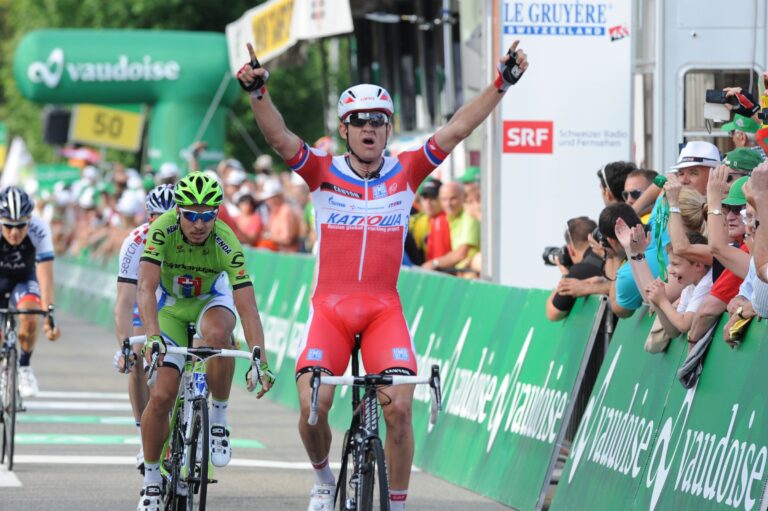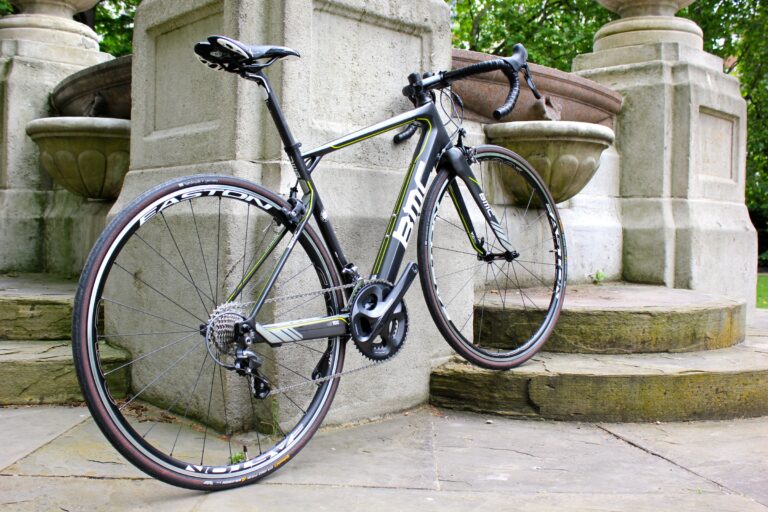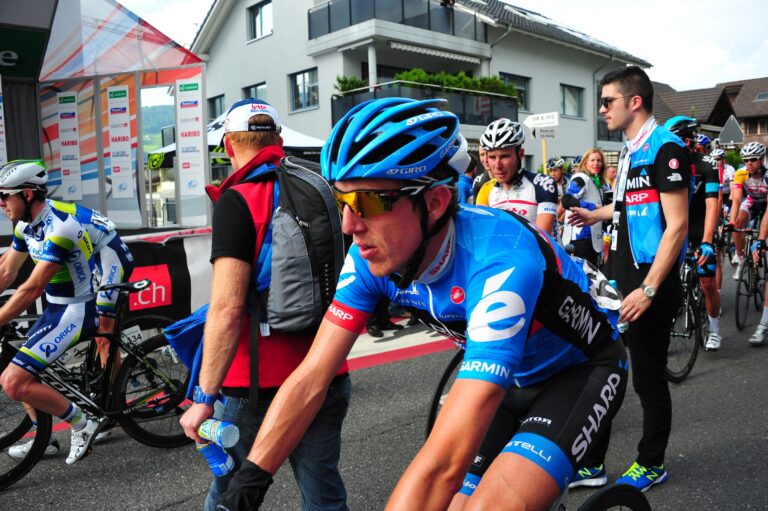Sprints and accelerations are power elements to our endurance sport.
They are the icing on the cake of all the long miles and intervals. These short efforts are what keep you with a group, and get you to the top of the hill first. They are what make a sportive your own personal race and give you that extra sense of achievement that you only get from digging deep into your reserves at just the right time to really make it count.
We have only very limited reserves for this kind of effort, so knowing when to use them and when to back off and let go can make or break your event. In order to have the choice you need to have the potential to go fast when it matters.
Strength becomes power
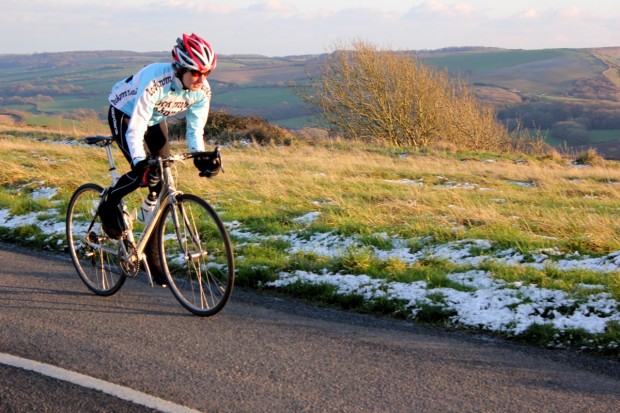
To a degree the strength work involved in climbing can form the foundation for a good sprint. The difference is speed and power. Strength comes before power, and to produce a good sprint you need to be able to accelerate, requiring short periods of maximum effort. This ability allows you to initiate a ‘jump’ and maintain the high power and pace that gives you enough sustained speed to close a gap or push over the summit of a hill.
Seated Sprinting technique – when speed is of the essence
For any sprint practice you ideally need to be moving fairly fast even before you put in your effort, so finding a safe place to practise is important. For seated accelerations it may be sensible to start moving from a moderate speed in a gear where your leg speed feels a little slow. Then, keeping your elbows bent and holding your upper body still, ‘kick’ into the gear and get it moving as fast as you can for as long as possible. Initially you will need to pull more strongly against the handlebars to brace your body for a stronger pedalling action and then ultimately achieving a high leg speed is important too.
At higher cadences the feel of the circular pedalling action will be quite different as your leg and hip muscles will have to learn to ‘switch off and on’ in sequence at faster and faster rates. This will take practice, so try to find a gear which you are moving quickly once you get up to maximum speed, but that you can control so that you are not ‘bouncing’ in and out of the saddle. If improving your leg speed is your main goal it may be better to work on a progressive acceleration rather than ‘kicking’ too hard into your effort, with your focus more on top speed rather than acceleration. Aim to be able to move smoothly at leg speeds 15-20 revs higher than your natural pedalling cadence as a starting point.
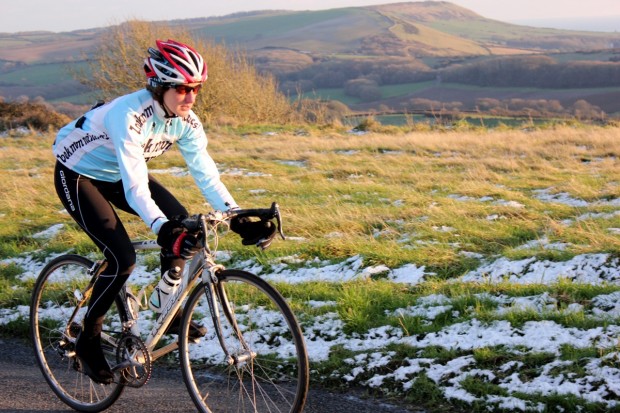
In a ride situation you are most likely going to need some seated accelerations when you are working in groups large or small. Some of the accelerations will be quite subtle; while at other times there will be a greater surge in speed that you have to respond to. In a group situation it’s important not to overact to a change in pace and try to smooth out the ride for you and others as much as possible, but having a seated turn of speed will certainly help you close gaps and stay with groups to take advantage of drafting that little bit longer. Equally if you are working in a string and taking turns in a smaller group there will be seated accelerations within the line, and having practiced and trained these you will find them much less fatiguing than if you have not made any attempt at preparation.
Standing accelerations – for extra kick
Accelerations out of the saddle can help to give you that extra bit of kick on the flat, or on a climb can help you move onto a passing wheel or push over the top. In practice standing accelerations are quite skilful, and many riders find it hard to stand up and accelerate because they have not mastered the technique required to deliver that extra power they are looking for.
As you stand up to accelerate you need to move the bike underneath you much more quickly than when you stand simply to climb, co-ordinating your legs, arms and core with perfect timing, whilst maintaining a straight and efficient line with the bike. You may need to shift your weight further forward on the bike and pull both upwards and forwards on the pedals to generate more momentum. A standing acceleration also requires more effort and emphasis through the arms and core, so having a good foundation of strength from out of the saddle climbing will help you develop your standing acceleration, but you will need to practice moving faster too.
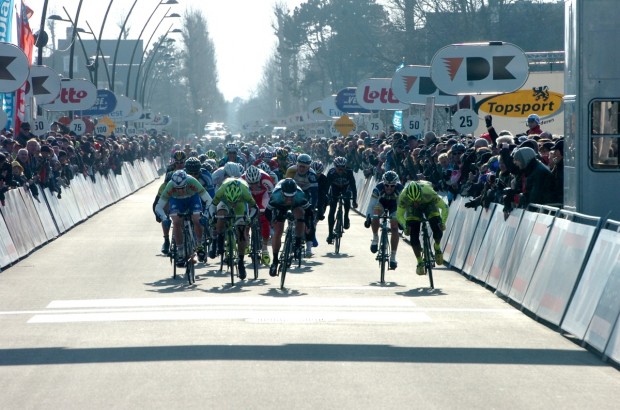
As with seated accelerations it is best to start to practice standing accelerations at moderate speeds, changing up a gear or two before standing and ‘kicking’ into the sprint. On a moderate climb you can practice your standing accelerations nicely, putting in 3 or 4 short efforts within the hill. Once you are able to accelerate well, learning to transition smoothly into a seated effort is important too, especially if you have a rider following your wheel closely and want to avoid them running in the back of you.
One step at a time
Developing an efficient and effective sprint can take some time, but working on these technique basics will give you somewhere constructive to start. To truly develop your ability to accelerate you need to be training at speed, almost as fast as you can go, but you will build a more effective sprint by breaking it down into parts that you can focus on before putting it all together.
As well as the technique, other essential elements include getting used to accelerating around other riders and coming off a wheel and out of another’s slipstream at just the right time to save as much energy as possible. Anticipation and gear selection is also really important as it allows you to hit top speed just at the right time. Since accelerations are probably one of the most technical elements of cycling, be patient but proactive with your sprint practice and over time you will start to develop that extra punch that can make for a more dynamic and racy ride.

